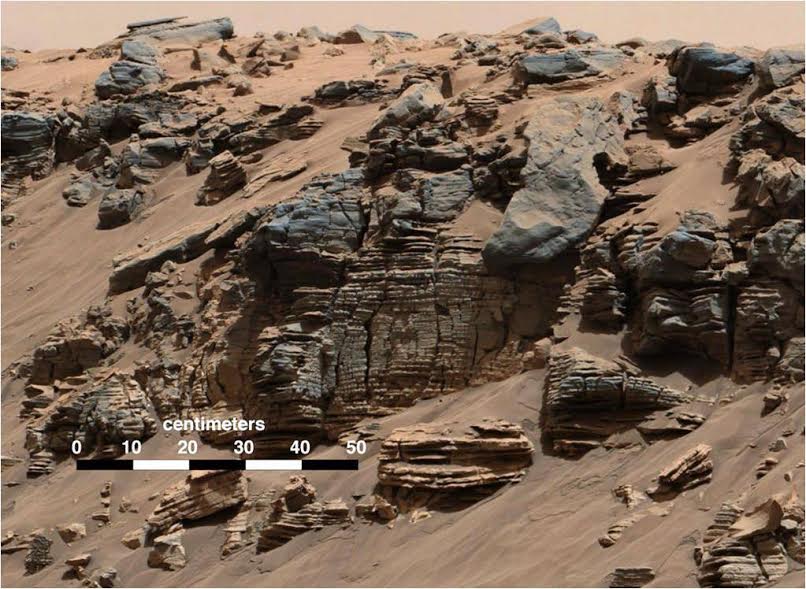Researchers have long known that Mars has water on its surface in the form of ice, but now, after years and years of research, we might finally have the decisive clue that our planetary neighbor has liquid water on its surface. The key find was perchlorate – a substance that significantly lowers the freezing point, so that water doesn’t freeze into ice, but remains liquid and briny.

“We have discovered the substance calcium perchlorate in the soil and, under the right conditions, it absorbs water vapour from the atmosphere. Our measurements from the Curiosity rover’s weather monitoring station show that these conditions exist at night and just after sunrise in the winter,” explains Morten Bo Madsen, associate professor and head of the Mars Group at the Niels Bohr Institute at the University of Copenhagen.
Perchlorates are substances which can be produced naturally and are soluble in water. Basically, if you mix them with water, the freezing temperature of water significantly; in other words, it can get a lot colder without the water actually freezing – it becomes a sort of liquid brine. The situation on Mars is especially fit to accommodate this mixture, as researchers explain. This can also explain some of the water circulation on the Red Planet.
“When night falls, some of the water vapour in the atmosphere condenses on the planet surface as frost, but calcium perchlorate isvery absorbent and it forms a brine with the water, so the freezing point is lowered and the frost can turn into a liquid. The soil is porous, so what we are seeing is that the water seeps down through the soil. Over time, other salts may also dissolve in the soil and now that they are liquid, they can move and precipitate elsewhere under the surface,” Madsen adds.
The Curiosity Rover has previously found tantalizing clues that water once flowed on Mars. It is now believed that Mars kept its liquid water for millions of years – it also has the rounded rocks with the right chemistry to boast. But if there are indeed large quantities of perchlorate on the surface, it might mean that liquid water on Mars (or right below its surface) is much more common than previously thought.
Close-up observations have also shown characteristic of old riverbeds with rounded rocks, as well as expanses of sedimentary deposits, lying as ‘plates’ one above the other and leaning a bit toward Mount Sharp. The latter are very typical types of deposits, related to lake environments:
“These kind of deposits are formed when large amounts of water flow down the slopes of the crater and these streams of water meet the stagnant water in the form of a lake. When the stream meets the surface, the solid material carried by the stream falls down and is deposited in the lake just at the lakeshore. radually, a slightly inclined slope is built up just below the surface of the water and traces of such slanting deposits were found during the entire trip to Mount Sharp. Very fine-grained sediments, which slowly fell down through the water, were deposited right at the very bottom of the crater lake. The sediment plates on the bottom are level, so everything indicates that the entire Gale Crater may have been a large lake,” Madsen continues.
A long long time ago, some 4.5 billion years ago, Mars would have been a very different place than it is today – with a solid atmosphere and a lot of liquid water. But the atmosphere has dissipated into space, the water has also evaporated and escaped the planet and Mars no longer has a magnetic field.
So what does this mean for the possibility of finding life on Mars? Well, even though water is an essential requirement for life as we know it, water itself is not sufficient. Mars is really cold, and not protected from cosmic radiation (like Earth is), so finding life is not as likely as you’d be tempted to think. But it’s still a possibility.


